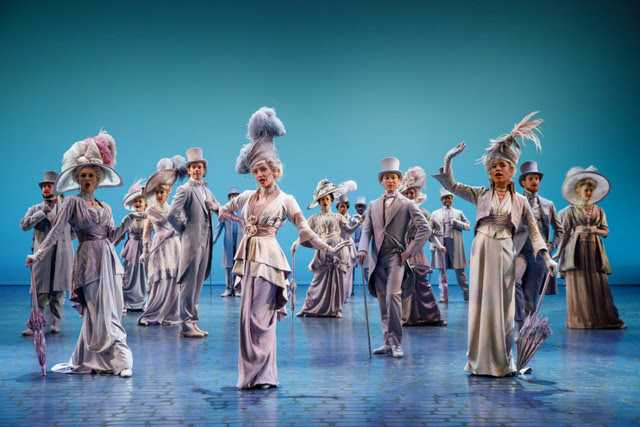TiMax spatial sound design for My Fair Lady
- Details

When he was asked to create the sound design for My Fair Lady back at Broadway’s Lincoln Centre, he immediately turned to the TiMax platform.
Salzberg explains: “The ability within TiMax to do timed, and crucially, live delay changes meant it was the right tool for the job. TiMax makes it possible for the sound system to not call attention to itself.”
Going against the current tide in many Broadway and London West End productions, The Lincoln Centre Theatre is very deliberate in its choice to use the original orchestrations of productions. Where elsewhere theatres are shrinking the size of the band, My Fair Lady boasts the solid sound of a 29-strong orchestra coming from the pit. And it’s a difference the theatre wanted to showcase.
Salzberg’s sound design divides the stage into 14 different zones, with TiMax spatial Image Definition objects created to allow any console mic or group to be imaged to and morphed between each zone. Control of the audio begins with a DigiCo SD7, connecting 42 inputs to TiMax SoundHub which then sends 56 outputs to the loudspeakers. Salzberg assures that, “the TiMax software interface makes it simple to enter the 2,352 delays times and levels required.”
A combination of mainly d&b loudspeakers provides the bulk of the reinforcement. Six V7s form the backbone of the main ring, and a further two left and right of the proscenium, alongside a V10P and two Meyer UMS boxes. Eleven E5s fill in the front area, whilst a total of 30 E0s supported by two E12s manage the surround soundscape. The front and rear balcony areas receive TiMax-matrixed audio from six Q7s and 10 E0s respectively.
In addition to the main TiMax zone images, the orchestra pit boasts a further six delay zones which enable the audience to sense where the instruments are located. Six d&b Q7s provide rear orchestra delays.
Salzberg took full advantage of TiMax’s many capabilities, from dynamic delay matrix to link-able parametric EQ, adding: “and more than anything, it’s ability to change delays over time.” Some of the show’s cues required over 200 delay times to change over 15 seconds. Salzberg enthuses: “TiMax handled this staggering feat inaudibly.”
(Jim Evans)
















